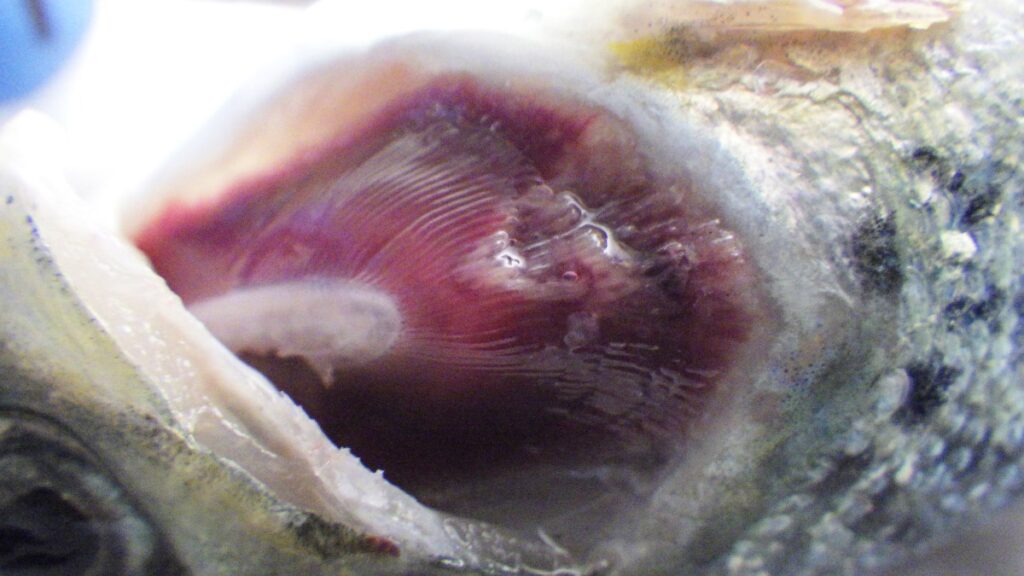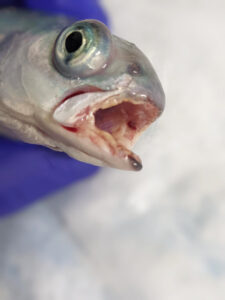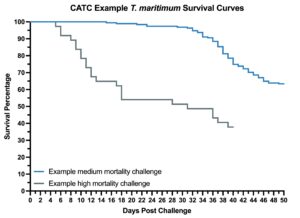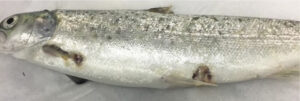Tenacibaculosis – an alternative approach

The Center for Aquaculture Technologies Canada has launched a tenacibaculosis model to assist farms in combating growing disease challenges
In 2023, the Norwegian salmon industry experienced the loss of 62.7 million Atlantic salmon before they reached market size, marking an increase in mortality by 6 million salmon from the previous year. The largest contributors to this increased mortality were health issues arising from a variety of infectious diseases, among them tenacibaculosis. Outbreaks of tenacibaculosis have notably risen over the past decade and present a growing challenge to the salmon industry.
Tenacibaculosis presents a major economic and welfare concern to salmon farmers. Afflicted fish develop ulcerative lesions that, if not initially fatal, are at risk of developing complex secondary infections. These infections may be difficult to treat and aid the spread of further disease within a pen. The value of surviving fish is also reduced, as tenacibaculosis results in poor weight gain and damages fillet quality.

Atlantic salmon with mouth erosion caused by Tenacibaculosis
This disease predominantly affects smolts newly transferred to sea cages. Outbreaks are triggered by a variety of factors, but environmental stressors are of high concern as climate change drives record high ocean temperatures. Thermal stress delivers a double whammy for farmers, weakening the immune system of salmon while simultaneously creating an environment for many pathogenic bacteria to thrive in.
To tackle this concern, increasing biosecurity and improving water quality is important, though preventative treatment presents the simplest and most effective longterm solution for farmers in reducing the incidence of tenacibaculosis. No commercially available salmonid vaccines are currently available, however, and with growing demand from consumers for antibiotic-free animal products, the current antibiotic treatments are not a reliable or longterm solution.
The Center for Aquaculture Technologies Canada (CATC) recognised a gap in the industry tackling this challenge and has commited to remaining at the forefront of challenge model development. The threat of infectious disease, both novel and native, is increasing alongside rising ocean tempatures, and staying ahead of these changes in the market has been a priority of CATC since inception.
Given the escalating concern surrounding tenacibaculosis, CATC saw it as imperative for the salmon industry to prioritise the development of sustainable, efficient strategies for outbreak prevention and control, which led to the development of the Tenacibaculosis Challenge Model. CATC’s Tenacibaculosis Challenge Model is reliable and consistent, which is essential for developing effective management strategies, such as vaccines, feed additives, or identifying genetically resistant strains.

“Over the past years, tenacibaculosis has emerged as one of the most severe bacterial infections affecting various farmed fish species across different geographical regions. For instance, the emergence of disease caused by T. maritimum, along with new Tenacibaculum species, now poses a significant threat to the global salmon farming sector,” states Dr. Fabio Zanuzzo, Head of Aquatic Animal Health at CATC. “Our unique Tenacibaculosis Challenge Model offers the salmon industry a powerful and distinctive resource for developing effective strategies to address this evolving and complex disease. This represents a breakthrough for the sustainability and profitability of salmon operations.”
CATC’s robust model supports the industry in assessing the efficacy of various treatments, whether administered before, during, or after infection with Tenacibaculum maritimum. Providing customization and flexibility, combined with the reliability of this challenge model, CATC’s Tenacibaculosis Challenge Model allows for studies to simulate acute and chronic infections, offering a framework for analysing a range of clinical signs and mortality.

Atlantic salmon with ulcerative skin lesions caused by Tenacibaculosis
Tenacibaculosis remains a distinct challenge to aquaculture, posing a threat to the health and economic viability of the industry. However, with this innovative service offering from CATC’s Aquatic Animal Health & Laboratory Technologies divisions, aquaculture facilities can mitigate the risks associated with tenacibaculosis outbreaks through continued product development in the line of vaccines and feed additives poised to tackle this problem.
Continuous research, cooperation and innovation within the aquaculture sector is crucial for the industry to succeed faced with the continuous threats and changes in the market, and The Center for Aquaculture Technologies Canada continues to be committed to the sustainability and success of aquaculture globally.


